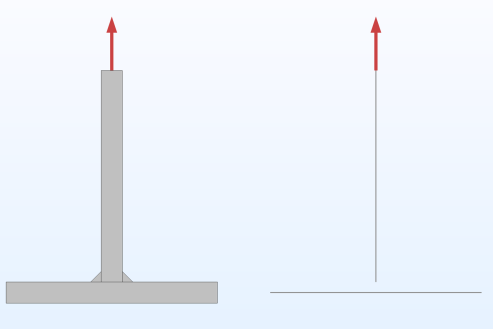To perform a weld evaluation, you select the Weld verification check box in the
Edge to Edge feature in the Shell interface.
The evaluation is based on the shell section forces at the weld edge on the source side of the connection. From these forces, available from the Shell interface, only the components that are transmitted through the weld are kept. The forces are transformed to the weld reference frame. The equivalent stress is computed as follows:
When interested in weld evaluation the source and destination in the Edge to Edge feature needs to be selected in a proper way to obtain meaningful results for the one-sided and double-sided fillet joints. The source has to be the edge belonging to the plate that would have both top and bottom sides welded if a double-sided fillet was to be used.
